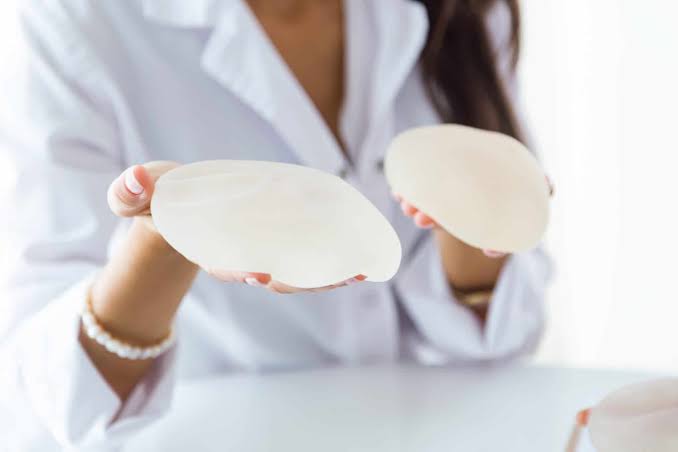Minoxidil is one of only two FDA-approved treatments for androgenetic alopecia, aka male and female pattern baldness. Typically applied as a topical foam or solution, it is available in 2% and 5% concentrations. It’s very effective in helping stop the progression of hair loss and encouraging regrowth.
That said, minoxidil may not be for everyone, and there may be some additional considerations to take into account. Minoxidil might not be safe for you, or it might not work for your specific type of hair loss. Read on to decide if minoxidil is the right treatment for you.
1. What Type of Hair Loss You Have
Minoxidil is extremely effective for androgenetic alopecia — between 50 and 80% of men report seeing good results. For users with male pattern baldness, minoxidil slows the process of hair loss and encourages new growth in a majority of cases. A typical male minoxidil user experiences around 30% regrowth.
Minoxidil has also been used off-label to treat alopecia areata, hair loss usually caused by stress and autoimmune issues. Also off-label, it might help treat scarring alopecia — hair loss typically caused by an autoimmune response, infections, chemicals, or burns.
Minoxidil isn’t, however, officially approved to treat this latter category of conditions. There may not be enough research data to support its effectiveness. In the studies that show success, the results may not be as good as those for users with androgenetic alopecia.
Minoxidil could reduce the duration of hair loss in patients who’ve had chemotherapy. But studies have not demonstrated effectiveness in regrowing hair in these patients. Minoxidil has also not been proven effective in people with traction hair loss, usually caused by pulling or tight hairstyles.
2. How Advanced Your Hair Loss Is
Minoxidil isn’t a miracle cure for baldness. If you already have significant hair loss, it won’t bring back a full head of hair. And while it may help fill in a receding hairline and frontal baldness, it’s not FDA-approved for these specific uses.
Minoxidil works best for hair loss at the crown and other parts of the scalp where hair is thinning. But your results still depend on how far along you are in the course of hair loss. Minoxidil won’t work in areas of total baldness, because it can’t restore hair growth in follicles that have already died.
Minoxidil isn’t recommended for people over age 65. It’s less effective for those who’ve been experiencing hair loss for a few decades. It can also be dangerous for these patients, who are more likely to have contraindicated conditions or take contraindicated medications.
In cases where hair loss is already more advanced, hair restoration surgery could be a more effective treatment option. Hair transplants can be very effective in people who still have a good amount of growth at the sides and back of the head. But they won’t work in patients who don’t have enough active hair follicles to provide donor hairs.
3. Side Effects and Contraindications
The possible side effects of minoxidil, though not common, are numerous. They can include everything from irritation and skin rash to headaches, blurred vision, dizziness, irregular heartbeat, and/or chest pain. Before deciding to use minoxidil, consider your willingness to accept these risks.
People with certain medical conditions shouldn’t use minoxidil. These include people who are pregnant or breastfeeding, as it may harm the fetus or infant. People with certain types of tumors shouldn’t take minoxidil, because it can cause high blood pressure in these individuals.
Ordinarily, minoxidil can lower blood pressure and is sometimes prescribed to treat hypertension. If you already have low blood pressure, minoxidil might not be safe for you. Some people who use minoxidil experience postural hypotension, meaning their blood pressure drops dangerously when sitting up or standing up.
Because minoxidil is a vasodilator, people with certain cardiovascular conditions shouldn’t take minoxidil. You also shouldn’t use minoxidil if you have eczema, psoriasis, or another skin condition on your scalp. A small percentage of people stop using minoxidil because it causes new hair growth on body areas besides the head.
4. Cost, Convenience, and Consistency
In order for minoxidil to work, you need to apply it consistently twice a day. Most users apply it once in the morning and once in the evening or at night. Minoxidil takes a few months to start working, and once it does, you have to keep applying it. If you stop applying it, you’ll stop seeing results — and you could experience significant shedding.
Minoxidil is considered very affordable, especially if you get a monthly subscription from an online provider. Subscription delivery and lower prices can make it a lot easier to keep up with treatments and not miss doses. But the costs still add up, and if you have other priorities or financial constraints, minoxidil might have to wait.
Minoxidil might not be the best choice if your lifestyle isn’t very predictable. If you travel a lot, note that it’s not always easy to get your hands on minoxidil internationally. Minoxidil also might not be the best choice for people on atypical schedules. If your sleep and wake hours change every day, it can be difficult to maintain a regimen that works.
Finally, minoxidil use might be more difficult to maintain if you have certain mental health conditions. For example, if you have ADHD or struggle with depression, building a self-care routine can be a major struggle. Remembering or motivating yourself to apply minoxidil could be a challenge or stressor for anyone with executive function issues.
Setting Expectations
As effective as minoxidil is, it’s not a magic potion to solve your hair loss problem once and for all. It requires as much commitment and consistency as any other lifestyle habit, like washing your face or brushing your teeth. That’s why, before you start using minoxidil, you should be very sure it’s the right choice for you.
When you stop using minoxidil, it starts losing effectiveness. You have to stay on top of it for life. But the results are powerful. If you can maintain your regimen, you could see amazing outcomes.










